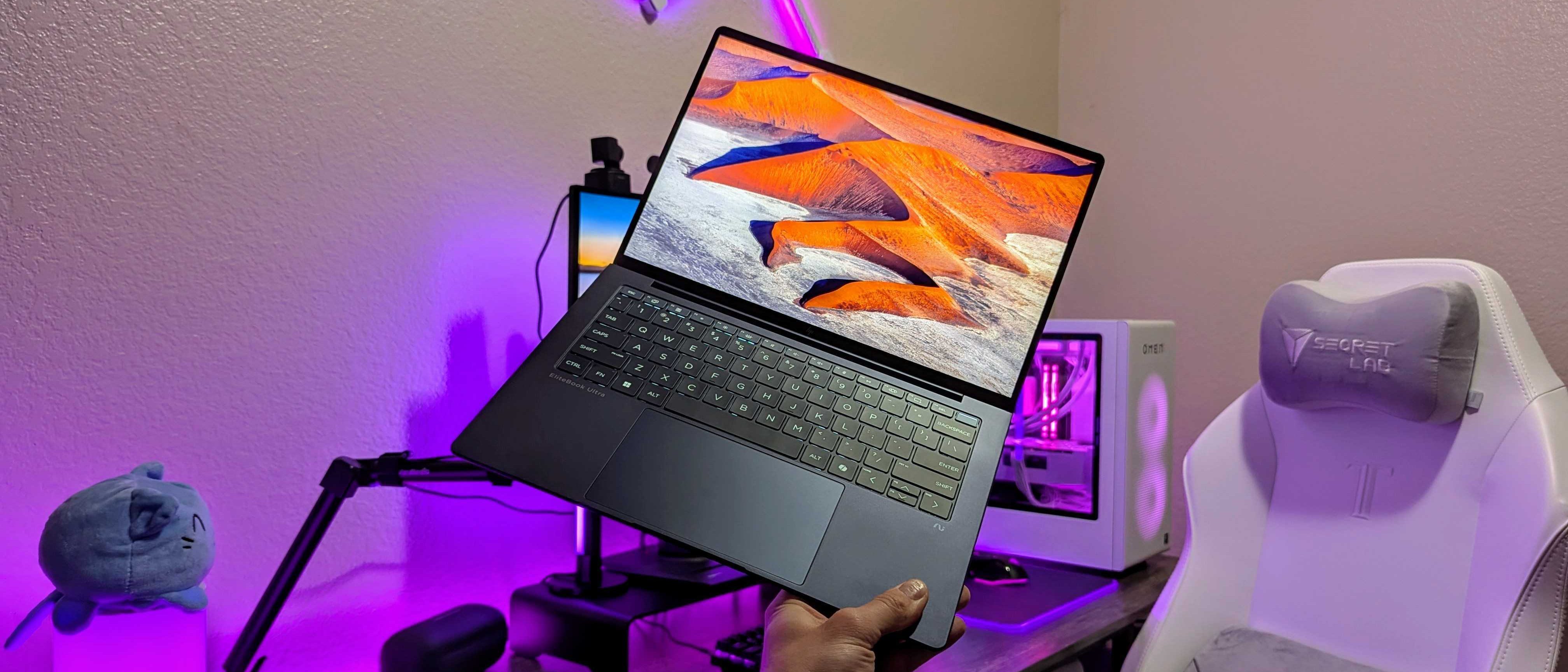
Microsoft Outlook has an out-of-office messages feature that lets you automatically send replies with relevant information when you're on vacation or don't have access to your mail. There are several ways to customize and set Outlook out-of-office replies, based on message senders and date ranges.
Note: This tutorial is for Outlook for Windows users with either Office 365 Business or Exchange accounts. Outlook's out-of-office messages feature is only available in Office 365 Business and Exchange. However, if you use Outlook with Office 365 Home, Outlook.com, Hotmail or Gmail, you can find an out-of-office "hack", that's a bit of hassle but gets the job done, on Microsoft's Office support site.
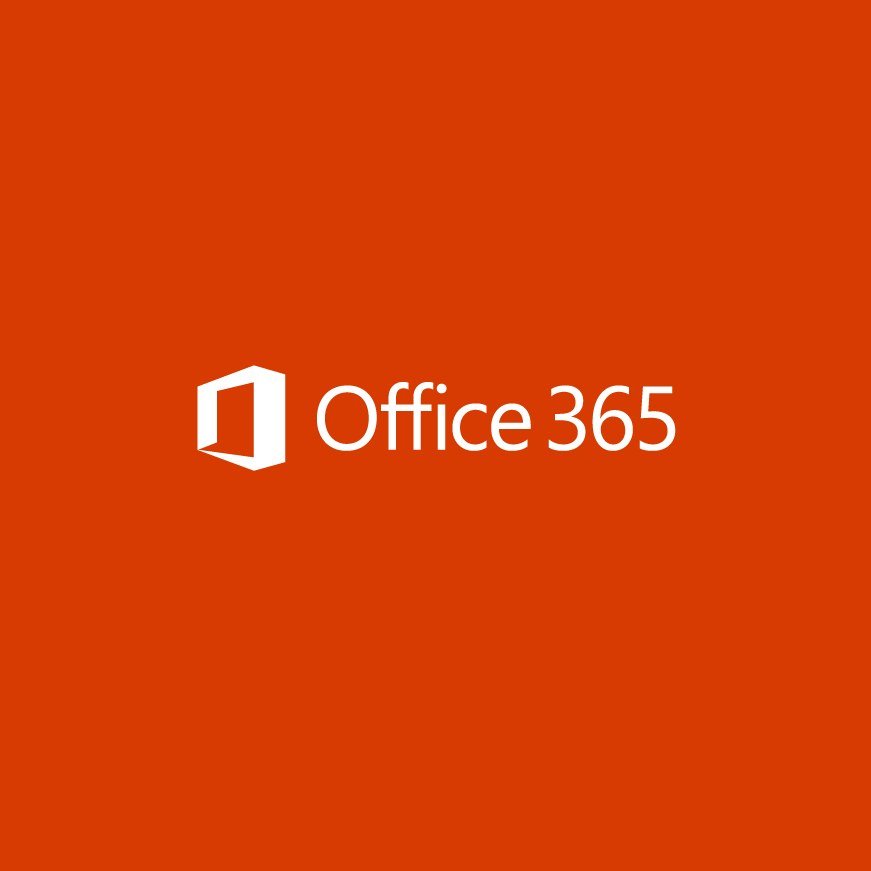
Stay productive with the latest features
Office 365 gives you full access to all the apps and perks, such as 1TB OneDrive and Skype minutes. You can also install Word, Excel, PowerPoint, Outlook, and other apps on up to six devices, and depending on the subscription, you can share the account with up to six people.
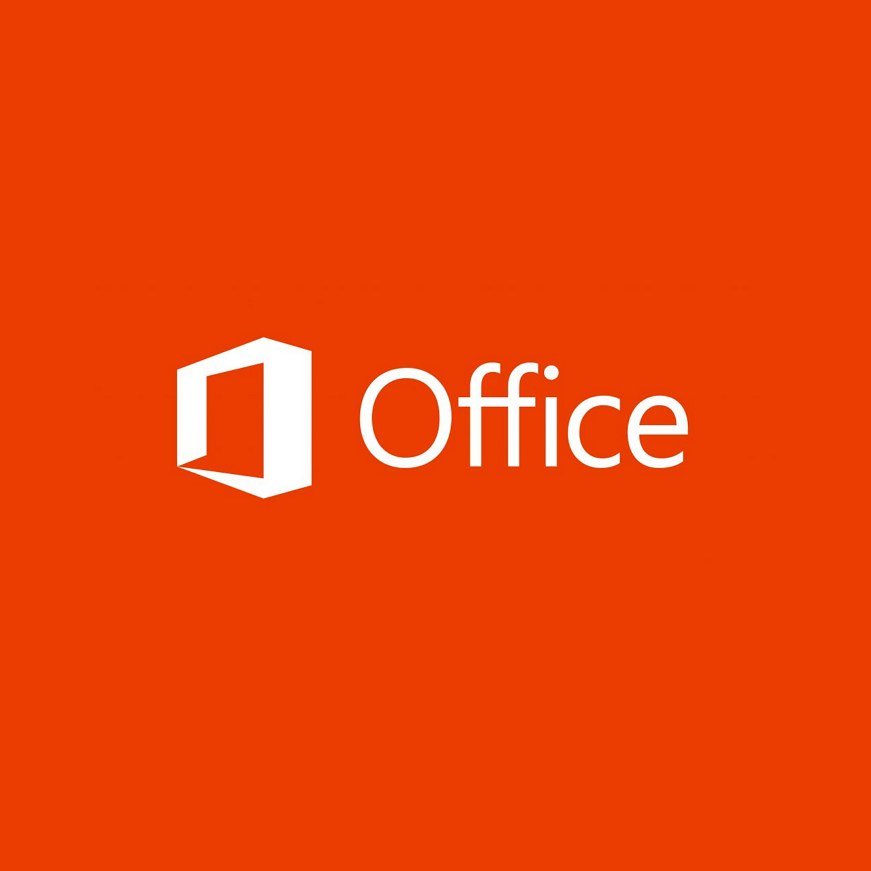
Pay once and forget it.
Office 2019 comes with all the popular apps, including Word, Excel, PowerPoint, and Outlook, with enough features to get the work done.
How to send out of office automatic replies in Outlook
- Click the File tab at the top-left corner of the Outlook display.
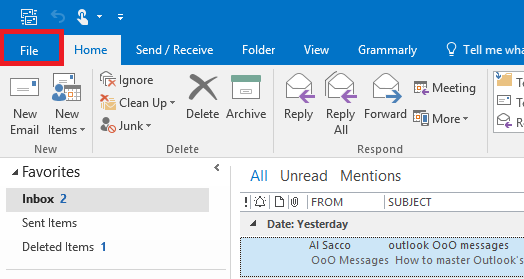
- Click the box to Automatic Replies box to the immediate left of the Automatic Replies (Out of Office) text.
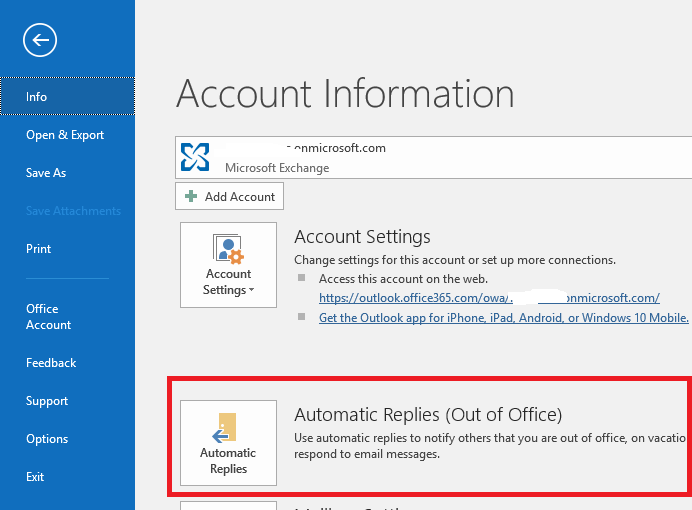
- In the Automatic Replies box that appears, click the circle to the left of the Send automatic replies option.
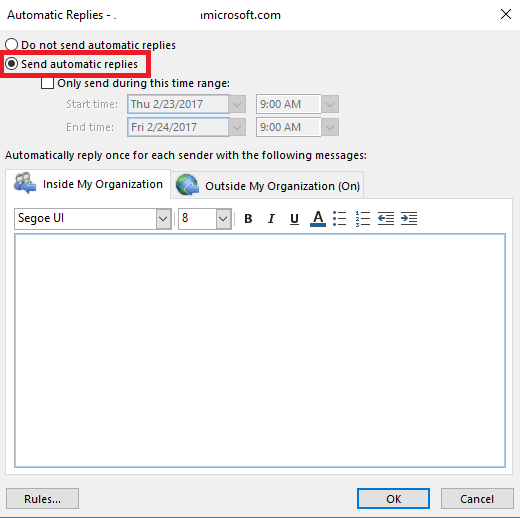
- If you want to set start and end times for when your out-of-office messages will begin and end, set the appropriate dates and times accordingly in the Start time and End time drop-down menus.
- Next, you can create your custom out-of-office reply. In the Inside My Organization box, type your custom message.
- You can use the Font, Font size and Font style options above the text field to customize the appearance of your automatic reply.
- You can use the List and Indent position options above the text field to create numbered or bulleted lists, and change the position of text in your automatic reply
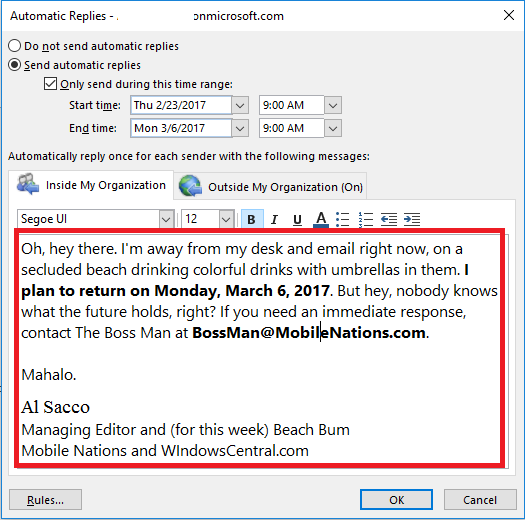
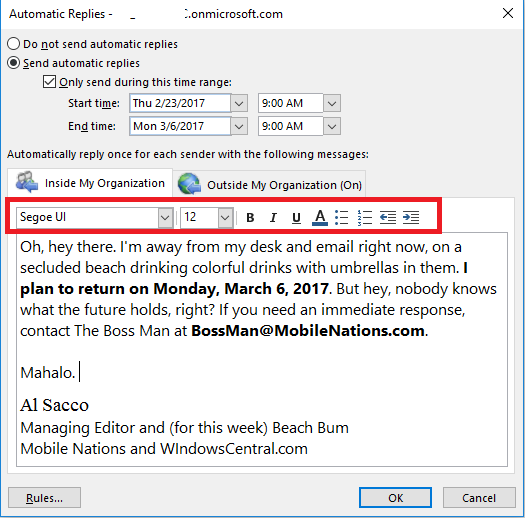
- If you only want to send out-of-office messages to people within your company click OK to confirm your changes.
- If you also want to send out-of-office automatic replies for every message you receive while you're away (including newsletters, spam and everything else) click the Outside My Organization box.
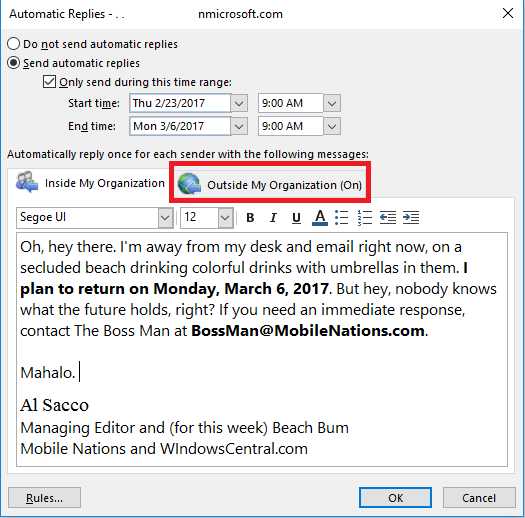
- Cut and paste your message from the Inside My Organization box to the Outside My Organization box, or create a different messages using the instructions in step No. 5.
- If you only want to send messages to senders from outside of your organization, leave the Insider My Organization box blank.
- If you want to send out-of-office automatic replies for every message you receive from people outside your company while you're away (including newsletters, spam and everything else) make sure circle next to Anyone outside of my organization is filled in.
- If you only want to send auto replies to people who aren't from your company but are listed in your Outlook contacts, click to fill in the circle next to My Contacts only.
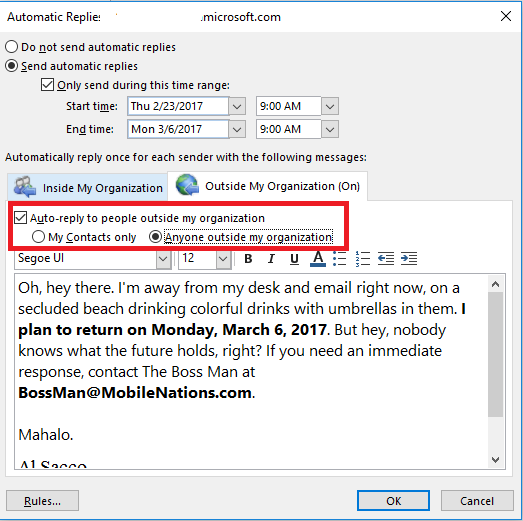
- Click OK to confirm your changes and enable Outlook automatic replies.
If you simply can't miss a message from your boss — even when you're in tropical paradise and really shouldn't be working — and you prearranged to use an email subject line "code word" (such as "IMPORTANT") so the boss can reach you if absolutely necessary, you can create custom Outlook out-of-office message rules to make sure crucial messages get sent to you via a personal mail account, for example.
How to create a custom rule for Outlook automatic replies
- Once you've created and save an automatic reply, return to the Automatic Replies box using steps No. 1 and No. 2 above.
- Click the Rules box in the bottom left corner.
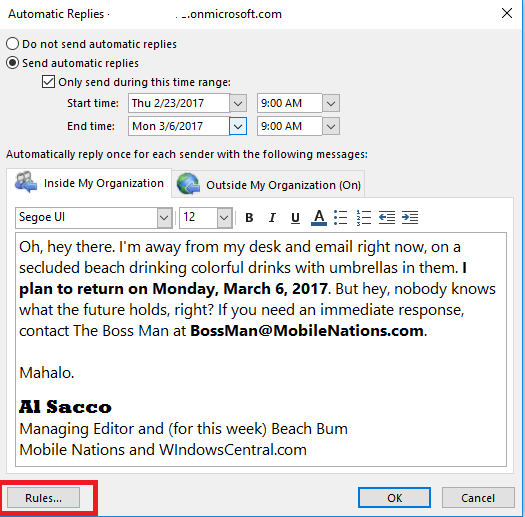
- Click the Add rule box.
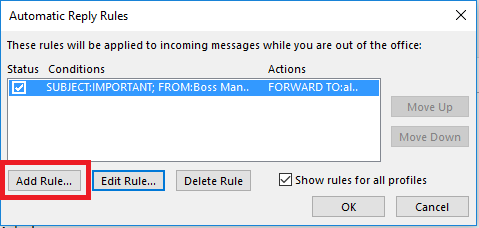
- A new box labeled Edit rule appears, and you should click the From box at the top.
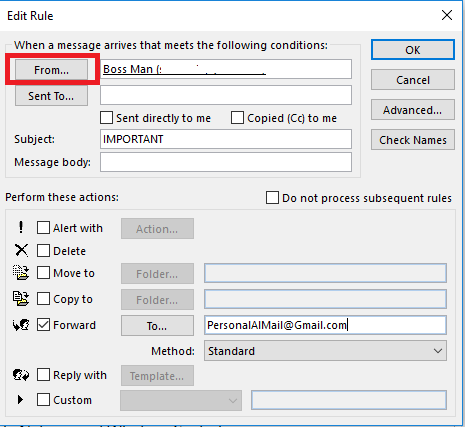
- In the drop-down menu beneath Address book choose Contacts.
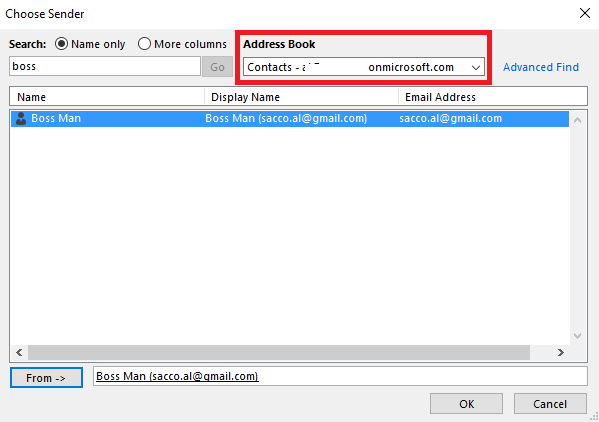
- Select your boss's name (or whoever is important enough to hear from while you're on vacation) from the list.
- Click From at the bottom of the box to add your boss's contact to the From field.
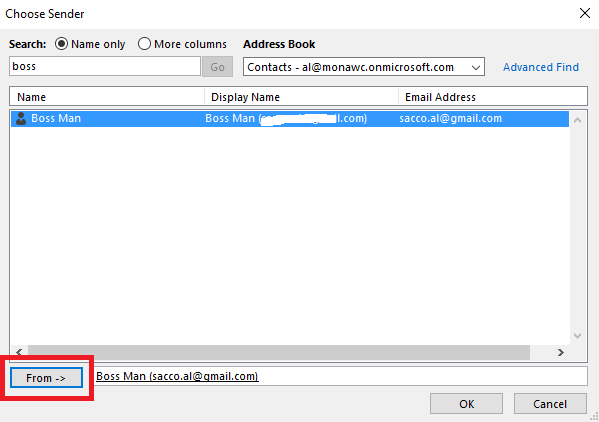
- Back on the Edit rule page, in the Subject line field, type your "code word," in this case: IMPORTANT.
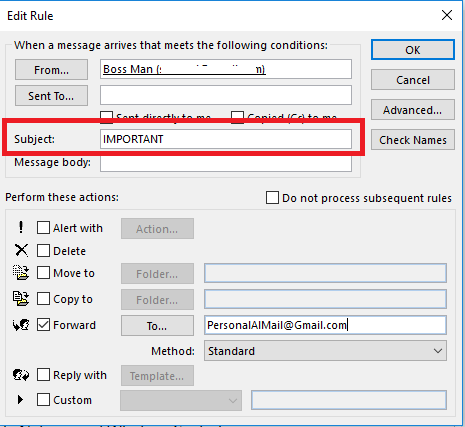
- Check the box next to Forward.
- Click To to add a forwarding address from your contacts. (Refer back to steps No. 4 and No. 5.)
- Or type the email address you want to forward the message to in the field to the right of both Forward and To.
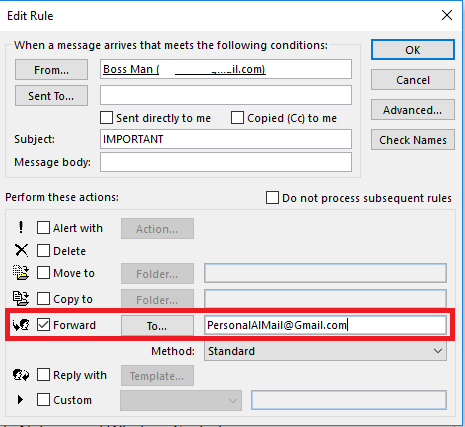
- At the top of the Edit rule box, click OK to confirm you new out-of-office message rule.
- In the Automatic Reply Rules box, click OK.
- And in the mail Automatic Reply Rules box, click OK a final time to confirm all changes.
If you want to modify any of your Outlook out of office rules, follow steps No. 1 and No. 2 above but in step No. 3, choose Edit rule instead of Add rule, and then make your changes accordingly
How to turn off Outlook out of office automatic replies
- If you didn't set an end date, or you want to disable your auto replies early, clicking the File tab at the top-left corner of the Outlook display. (If you out-of-office messages are enabled, you'll see a yellow box around the Automatic Replies option on the following screen.)

- Click the Turn off box beneath the Automatic Replies (Out of Office) option.
That's just about everything you need to know to master Outlook 2016 for Windows' out-of-office automatic replies. Hopefully you never have to worry about work mail when you're on vacation, but if you do you're now prepared.
For more Outlook and Office 365 help and how-to articles, read:
- How to color code Outlook messages by sender (and why you should)
- How to create a custom Outlook email signature
- 15 Microsoft Outlook keyboard shortcuts guaranteed to save time
- How to back up data in Outlook 2016 for Windows
Get the Windows Central Newsletter
All the latest news, reviews, and guides for Windows and Xbox diehards.
Al Sacco is content director of Future PLC's Mobile Technology Vertical, which includes AndroidCentral.com, iMore.com and WindowsCentral.com. He is a veteran reporter, writer, reviewer and editor who has professionally covered and evaluated IT and mobile technology, and countless associated gadgets and accessories, for more than a decade. You can keep up with Al on Twitter and Instagram.

